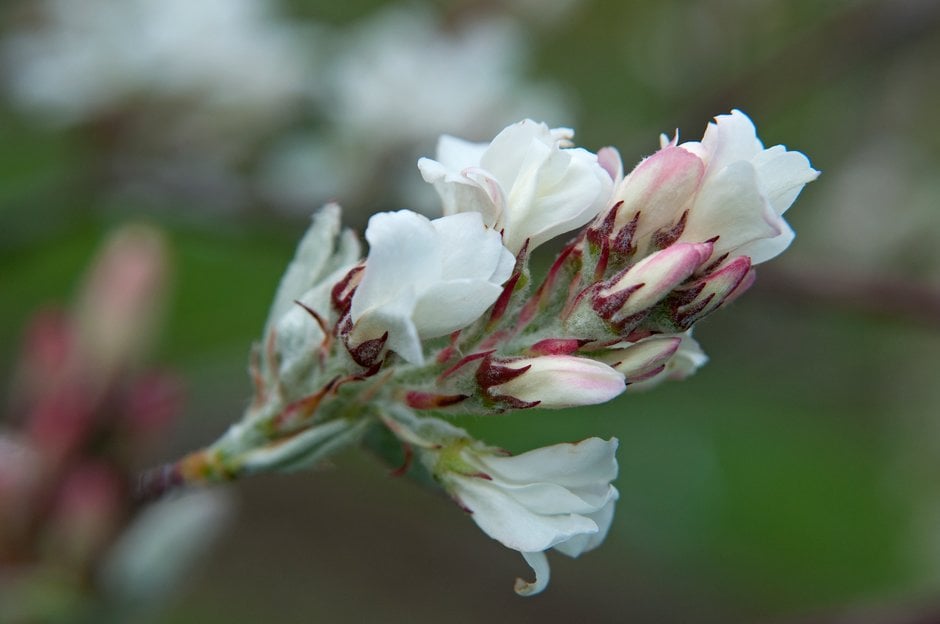Amelanchier ovalis 'Edelweiss'
snowy mespilus 'Edelweiss'
An upright, stoloniferous shrub, up to 4m high, with rounded oval leaves which are white and woolly at first but soon become hairless and dark green, then turn red, orange and yellow in autumn. Numerous erect clusters of white flowers, each up to 4cm across, in spring, are followed in summer by round edible fruits which turn red then dark blue-black
Size
Ultimate height
2.5–4 metresTime to ultimate height
10–20 yearsUltimate spread
2.5–4 metresGrowing conditions
Moisture
Moist but well–drained, Well–drainedpH
Acid, Alkaline, NeutralColour & scent
| Stem | Flower | Foliage | Fruit | |
| Spring | White | White Green | ||
|---|---|---|---|---|
| Summer | Green | Black Blue Red | ||
| Autumn | Orange Red Yellow | |||
| Winter |
Position
- Full sun
- Partial shade
Aspect
North–facing or West–facing or East–facing or South–facing
Exposure
Exposed or Sheltered Hardiness
H6Botanical details
- Family
- Rosaceae
- Native to GB / Ireland
- No
- Foliage
- Deciduous
- Habit
- Suckering
- Potentially harmful
- The berries are edible, but this tree is usually grown as an ornamental plant rather than to provide a crop of fruit in the UK
- Genus
Amelanchier are small deciduous trees or shrubs with showy white flowers in early spring, red to purple fruits and often good autumn colour
- Name status
Accepted
How to grow
Cultivation
Grow in moist, well-drained, preferably neutral or acidic soil in sun or partial shade; will grow in sun or partial shade but autumn colour will be brightest in full sun. This species will tolerate drier conditions and less acidic soils than many others
Propagation
Suggested planting locations and garden types
- City and courtyard gardens
- Cottage and informal garden
- Wildlife gardens
- Low Maintenance
- Flower borders and beds
- Hedging and screens
- Banks and slopes
- Edible fruit
Pruning
Pests
Generally pest-free
Diseases
May be susceptible to fireblight and honey fungus
Love gardening
Sign up to receive regular gardening tips, inspiration, offers and more
View our Privacy Policy
Get involved
The Royal Horticultural Society is the UK’s leading gardening charity. We aim to enrich everyone’s life through plants, and make the UK a greener and more beautiful place.
